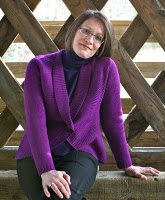 Meg Medina writes pictures books, middle grade, and YA fiction. She is especially interested in exploring stories about girls, Latino heritage, and the experiences of Latinos in the US. Meg considers writing for children the most honored way to use her talents. Here, she talks about creating the characters in her new novel, THE GIRL WHO COULD SILENCE THE WIND.
Meg Medina writes pictures books, middle grade, and YA fiction. She is especially interested in exploring stories about girls, Latino heritage, and the experiences of Latinos in the US. Meg considers writing for children the most honored way to use her talents. Here, she talks about creating the characters in her new novel, THE GIRL WHO COULD SILENCE THE WIND.
My first young adult novel, THE GIRL WHO COULD SILENCE THE WIND, pubs today through Candlewick Press. I should be dancing with joy, right? Well, yes, I did a little cha-cha this morning. But the truth is that pub dates are always a little sad for me, too, because it’s time to say goodbye to the characters I’ve spent years getting to know.
It took me six years from first draft to bookstore for this project. After all that time, the cast of characters from Tres Montes feels like family. Every murder, romantic tryst, and dangerous train adventure feels as real as if I’d lived it myself.

I’ll admit that I get unnaturally attached. Maybe it’s an offshoot of how I approach writing in general, which is to say at the utter mercy of my characters. Some writers pin their story points up on index cards, draw maps of the setting, and fearlessly move things around, their eyes always on the goal they’ve laid out.
But me? My comfort zone in fiction --- and in life, as it happens --- is thinking about what makes people tick. I’m a blank slate until characters spring to life and tell me their tale.
This is how it typically works. When I’m drawing characters I let their quirks and strengths float to the top quickly. I pit those traits against the compelling quirks of other characters, and slowly the conflict of the story takes shape.
That’s how it was in THE GIRL WHO COULD SILENCE THE WIND. Take Rafael, for example. He’s Sonia’s brother -- handsome and flirtatious. He’s full of life, his mind brimming with, well, thoughts of girls. Still, he adores his sister and underneath it all, he knows he’ll have to help his family survive after his father can no longer tolerate the mines. What happens when a boy like that decides it’s time to be a man? How does he define it? What risks is he willing to take and why?
Giving in to my characters is an act of faith, and it also means that have to be open to never really knowing who’s going to show up, good or bad. A character might peek in on me in an early chapter, when I’m still unaware of his or her potential or true intentions. Halfway through the novel, I realize he or she needs more. Pancho Muñoz, who is probably my favorite character in the novel, grew before my very eyes in this way. As I got to know him, I could see that he was more than an orphan taxi boy with a crush on my main character. He was sweet, humble, poetic, curious --- and he had a secret passion for Sonia. What would a boy be willing to do for love, if he thought he had nothing much to offer but also nothing much to lose? At the other extreme was Dalia, my guilty pleasure. Sharp tongued and mean, she’s often vicious to others. Imagine my surprise to find out how that loyalty comes is her best trait.
Oh, I could talk all day about my babies: Tía Neli, that crafty aunt, about Sonia, about Mongo the barkeep with a fancy for sharp knives --- about all of them who moved this story from a tiny seed, to an adventure that touches on topics like love, migration, and the right to dream.
But it’s pub date, isn’t it? It’s time to give the story away to readers. None of these characters belongs just to me any more. All I can do now, is send them out with their story and hope they can convince the world to love them as much as I do.
MM
 Meg Medina writes pictures books, middle grade, and YA fiction. She is especially interested in exploring stories about girls, Latino heritage, and the experiences of Latinos in the US. Meg considers writing for children the most honored way to use her talents. Here, she talks about creating the characters in her new novel, THE GIRL WHO COULD SILENCE THE WIND.
Meg Medina writes pictures books, middle grade, and YA fiction. She is especially interested in exploring stories about girls, Latino heritage, and the experiences of Latinos in the US. Meg considers writing for children the most honored way to use her talents. Here, she talks about creating the characters in her new novel, THE GIRL WHO COULD SILENCE THE WIND. 


